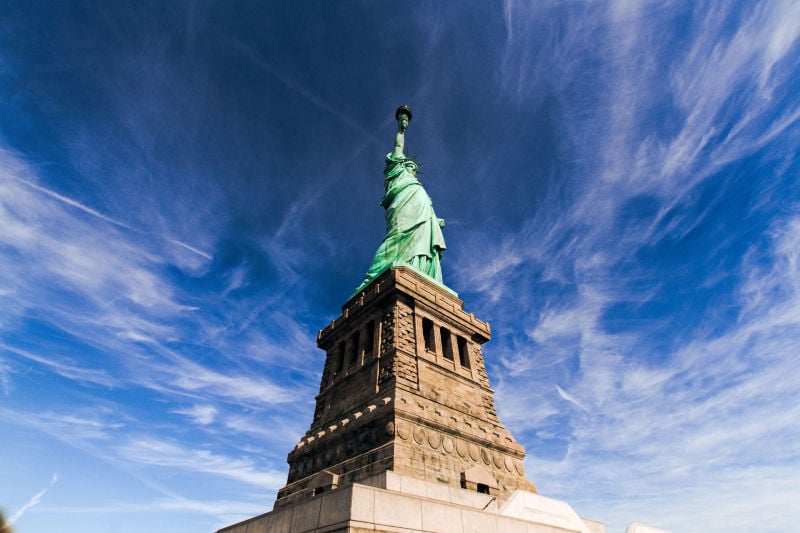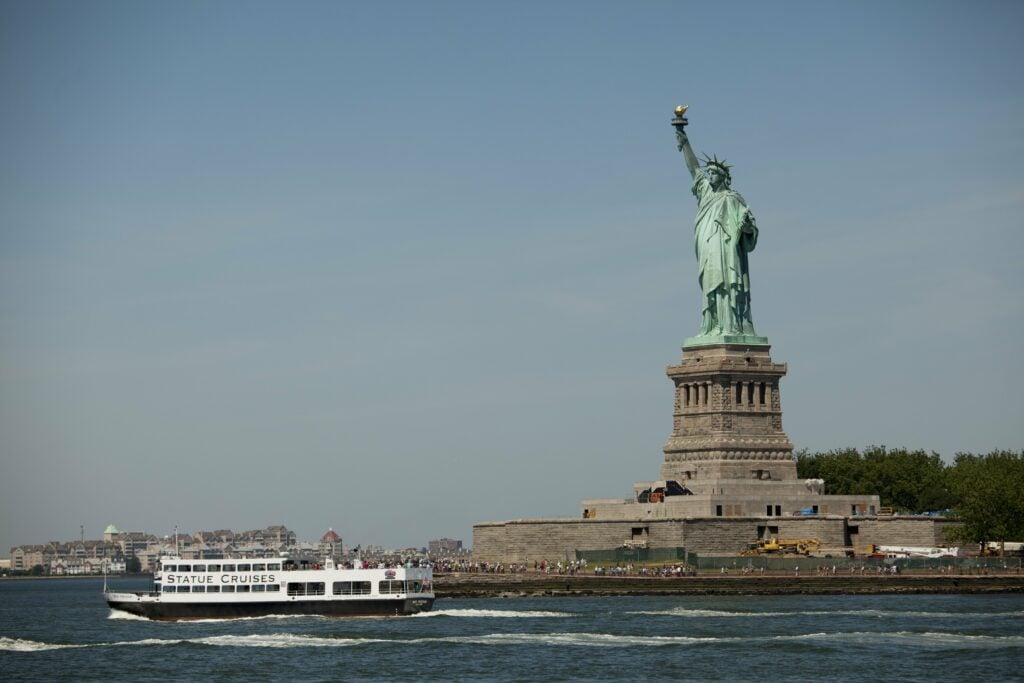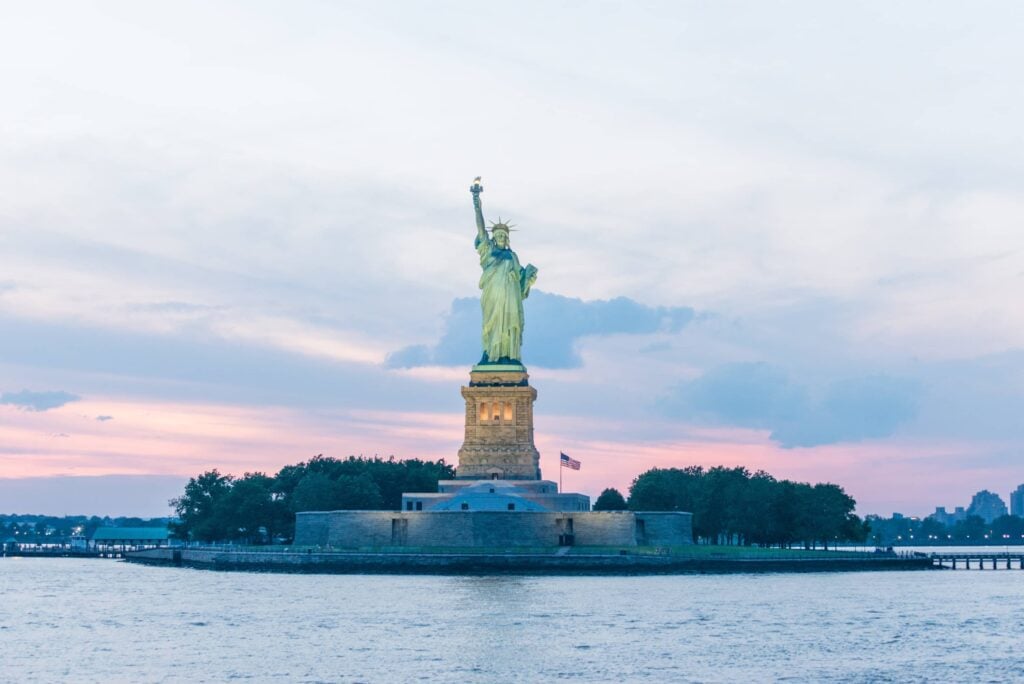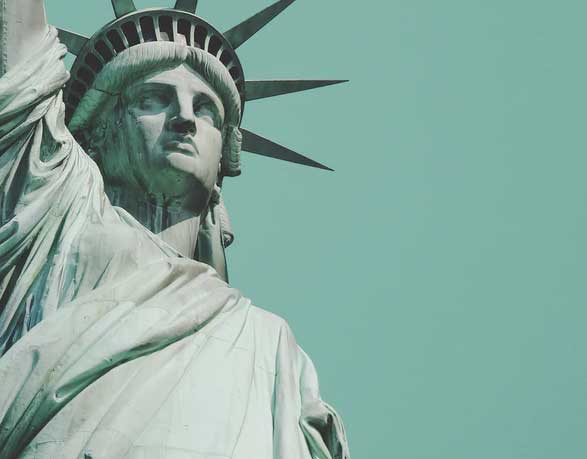Featured in this post
The Statue of Liberty is often seen as a universal symbol of freedom, democracy, and hope. Located on Liberty Island in New York Harbor, this iconic monument has greeted millions of immigrants to the United States and continues to inspire people globally. With all of its history and aura, have you ever wondered how Lady Liberty came to be? The story behind its creation is full of historical significance, symbolizing a friendship between the U.S. and France, two nations with a shared commitment to liberty and justice. Join us as we delve into the history of the Statue of Liberty, from how and why it was built to its enduring legacy, and how you can experience it up close and personal with Statue City Cruises!

The Origin and Inspiration of the Statue of Liberty
The idea for the Statue of Liberty originated in France in the early 1860s. A French political thinker, historian, and abolitionist named Édouard de Laboulaye proposed creating a monumental statue as a gift to the United States. Laboulaye admired the American fight for independence and the abolition of slavery. The monument was meant to honor the centennial of independence for the U.S. and serve as a symbol of friendship between the two countries. Laboulaye believed that France, which was undergoing its own struggles for democracy, could learn from America’s struggles and triumphs. He discussed the idea with Frédéric Auguste Bartholdi, a French sculptor known for his grandiose works, and thus began the journey to create the Statue of Liberty.
Designing the World-Famous Monument
Frédéric Auguste Bartholdi, a French sculptor known for his large-scale works, was entrusted with designing the monument. Bartholdi drew inspiration from classical images of Libertas, the Roman goddess of freedom. He envisioned a colossal statue that would symbolize enlightenment and liberty, reflecting the values shared by France and the United States.
Bartholdi’s design featured a robed female figure representing Libertas, holding a torch aloft in her right hand, which symbolized enlightenment. In her left hand, she held a tablet inscribed with the date of America’s Declaration of Independence (July 4, 1776). The statue would stand on a pedestal and be made of copper, which would eventually develop a green film due to oxidation, which is the color we see today.
Engineering the Statue with Eiffel
Creating a statue of such magnitude required state-of-the-art innovative engineering solutions. To address the structural challenges, Bartholdi collaborated with Alexandre-Gustave Eiffel, the engineer who would later design the Eiffel Tower. Eiffel and his team designed a metal framework to support the statue’s copper skin, ensuring stability and durability. This internal structure allowed the statue to withstand the elements, including strong winds in New York Harbor. It was also designed to be assembled in France and then shipped to the United States. The construction involved hammering copper sheets over a wooden framework, which was then attached to the iron skeleton.

Construction and Assembly of the Statue in New York City
Construction of the statue began in France in the early 1870s. By 1884, the statue was completed and disassembled into 350 individual pieces for shipment to the United States. The pieces were packed into crates and transported by the French Navy Ship Isère, arriving in New York in June 1885.
Meanwhile, in the United States, work on the pedestal was well underway. Designed by American architect Richard Morris Hunt, the pedestal was constructed on what was then known as Bedloe’s Island. The cornerstone was laid in 1884, and construction continued through 1885. Once the pedestal was completed, the statue began to be reassembled on-site. The final rivet was driven on October 28, 1886, during a dedication ceremony presided over by President Grover Cleveland. The Statue of Liberty was officially unveiled to the public, marking the culmination of years of collaboration and effort.
The Statue of Liberty’s Symbolism and Meaning
The Statue of Liberty carries profound symbolic meaning. At its core, the statue represents liberty and freedom, embodying the principles upon which the United States was founded. The torch held high in Lady Liberty’s right hand symbolizes enlightenment, guiding people toward freedom and justice. The broken chains at her feet represent the end of oppression and tyranny.
The statue also serves as a welcoming symbol for immigrants arriving in the United States. For millions of people who arrived by sea, the sight of the Statue of Liberty was their first glimpse of America, a land of opportunity and new beginnings. Emma Lazarus’s famous poem, “The New Colossus,” inscribed on a plaque in the pedestal’s museum, captures this sentiment with the lines:
The Legacy and Impact of Lady Liberty
Since its dedication, the Statue of Liberty has become a world-renowned symbol of independence, opportunity, and new beginnings. In 1984, the Statue of Liberty was designated a UNESCO World Heritage Site, recognized for its historical significance. It underwent a major restoration in the mid-1980s, just in time for its centennial celebration in 1986. The statue’s symbolism extends beyond the United States. It has inspired movements for freedom and human rights around the world. Its image has been used in protests and rallies, representing the universal desire for liberty and justice.
See the Statue of Liberty with Statue City Cruises
Now that you know why the Statue of Liberty was built and have some insight into its history, it’s time to book your tickets with Statue City Cruises to see it in person! Statue City Cruises is honored to be recognized as “Best Boat Tours” by Newsweek Magazine’s expert panelists and contributors and voted on by readers as the best of the best. Before embarking on your journey to Liberty Island, it’s important to familiarize yourself with the various available ticket options. There are four different tours with different access levels, so doing some research ahead of time is key. The ticket and tour options include:
-
General Admission
 : A General Admission ticket provides access to the grounds of the Statue of Liberty National Monument and the Ellis Island National Museum of Immigration.
: A General Admission ticket provides access to the grounds of the Statue of Liberty National Monument and the Ellis Island National Museum of Immigration. - Crown Reserve: For a more intimate experience, a Crown Reserve ticket includes access to the Statue of Liberty National Monument’s crown and pedestal. Limited tickets are available, allowing visitors to climb to the crown of the Statue of Liberty, offering panoramic views of New York Harbor and beyond.
- Pedestal Reserve: Pedestal Reserve tickets include access to the Fort Wood section of the pedestal of the Statue of Liberty National Monument and the Ellis Island National Museum of Immigration.
- Ellis Island Hard Hat Tour: The Hard Hat Tour Ticket offers a 90-minute guided tour of the unrestored Ellis Island Immigrant Hospital Complex. Tickets also offer self-guided Audio Tour headsets as you explore both Ellis Island and Liberty Island.
Visit History in New York City
A gift from France to the United States, the Statue of Liberty was built as a symbol of freedom, representing a bond between the two nations and their shared values of liberty and democracy. The story of her creation is a remarkable feat of engineering, design, and international collaboration. Standing tall in New York City, the Statue of Liberty continues to inspire millions of people around the world, reminding us of the importance of welcoming those who seek a better life. If you’re planning a visit to New York City, reserve your tickets today with Statue City Cruises! We are the only official authorized provider of tickets to the Statue of Liberty National Monument and Ellis Island recognized by The National Park Service.



 “Give me your tired, your poor,
“Give me your tired, your poor,